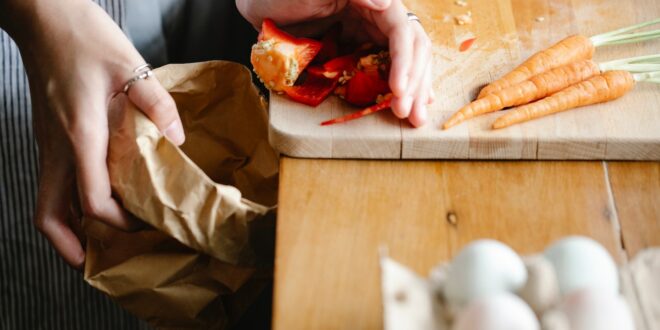Managing kitchen food scraps isn’t difficult when you live on a regular-sized section where there is plenty of space to locate a home compost bin. But when it comes to downsizing, many of us now live in apartments, or homes with tiny gardens and non-existent backyards, or in communal situations where even having a small worm farm isn’t possible. However, it doesn’t mean we have to succumb to tossing out food scraps with the regular rubbish. There are other, more environmentally-friendly (and dollar-saving) ways to manage our kitchen ‘scraps.’ Here are some bright ideas for what to do with yours:
Befriend the birds
Store several days worth of fruit and vegetable peelings (avoid onion, citrus, and banana skin) in a plastic bag, and keep them fresh by storing them in the fridge. When you have a sufficient quantity, boil or microwave to soften them, then pop them onto a bird table for your feathered friends. If you’re feeling ambitious, add them to other ingredients (such as leftover pasta, rice, and meat scraps or trimmings) to make a bird pudding. If you have more bird puddings than you need, give them to family, friends, and early childhood centres to use in their own gardens, or store them in your freezer until required.
Community minded
Strike up an arrangement with a local community garden, neighbour, or family member, to use their compost bin to deposit your kitchen scraps (you can store the scraps in the freezer until you have enough to make a trip worthwhile). Check out your local council or Citizens Advice Service for information on organisations such as kaicycle, which call to collect your compostable waste.
Waste not …
Avoid kitchen scraps by purchasing ready prepared vegetables such as washed salad leaves, diced root vegetables, and frozen spinach. These purchases may seem a little more costly, but there is no waste involved when using them in meals.
Learn to love ’em
Much of what we think of as fruit and vegetable scraps are actually useable, and when thoroughly washed to remove all traces of soil, never need to be thrown out in the first place. The leaves of beetroot and white turnip are deliciously tender and tasty when boiled and served as a salad with olive oil, lemon juice, and ground black pepper. The outer leaves of cabbage, and many other brassica, make wrappers for dolma when blanched. Radish leaves can be popped in a salad, and the tops of young carrots can be blended with other quality ingredients to make a tasty spread or pesto. Silver beet ribs are delicious when diced, steamed, and served with a rich cheese sauce, and the peeled and diced ribs of cauliflower and broccoli are a crunchy addition to salads, which makes a great dipping veg to serve with hummus.
Ferment me!
Clean apple cores and peelings are the basis for apple cider vinegar. This old fashioned home brew is coming back into fashion with the fermenting craze, and recipes abound. Correctly made homemade vinegar can be used as the basis for vinaigrettes, but will not be sufficiently strong enough to use in pickling and preserving.
Wiz of an idea!
Use your kitchen wiz to grind up soft fruit and veg scraps to the consistency of kibbled wheat, then add them to potting mix when planting a container-grown plant. Tuck the food-scrap enriched growing medium well down in the pot where it will decompose without creating an odour. The scraps will deliver nutrients to your new plant as they break down.
Fair enough!
Lumpy fruit stones (such as those from avocado and apricot, for example) make wonderful pot plants. Sow them up into recycled containers, grow them on, then donate them to your local school or church to sell at their fair days.
Adopting creative ways to use kitchen food scraps is good for the environment, the community and our mental health. Why not start today!











Join the Discussion
Type out your comment here:
You must be logged in to post a comment.